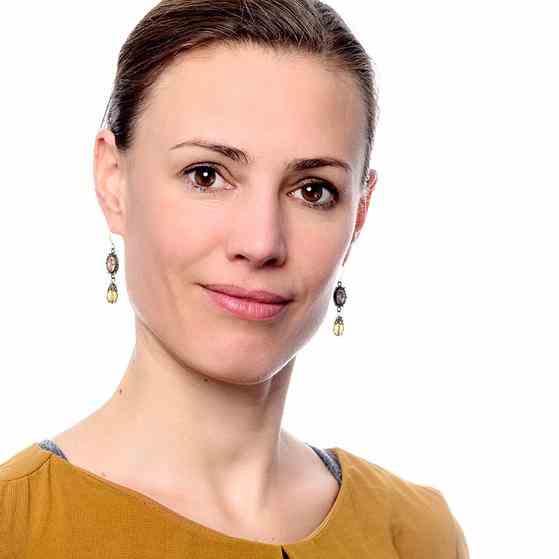Status: 11/06/2022 4:29 p.m
The department store model is not only being debated in Germany. Even world-famous, traditional establishments in major cities have to keep reinventing themselves.
Paris: Glitz and glamor have fine cracks
“Oh la la!” French President Emmanuel Macron marveled in June 2021 when he opened the La Samaritaine department store on the banks of the Seine, which had been renovated for 750 million euros. 16,000 gold leaves adorn Gustave Eiffel’s iron staircase there. Many of the 1,700 employees stand on it and applaud Macron and her boss Bernard Arnault, the billionaire boss of the luxury brand Louis Vuitton. The decoration in the department store is reminiscent of Parisian lanterns, metro stations and bouquinist stands: shopping is like taking a walk through the city.
In 1852, Le Bon Marché opened as the first department store in Paris. Since then, the “dinosaurs of trade have repeatedly adapted to their environment,” says Galeries Lafayette President Philippe Houzé. Simply to survive. With the development of supermarkets in the 1970s, department stores also lost sales in France; later through online trading. The latest blow to the office: Corona with months of closures, vaccination checks at the entrance, tourists staying away. They usually accounted for half of sales in Parisian stores.
La Samaritaine on the Parisian banks of the Seine was reopened in the summer of 2021 after extensive renovations.
Image: Stefanie Markert/ARD Studio Paris
The result: Galeries Lafayette sells another seven regional houses, for example in Dijon or Reims. New owner SGM wants to turn it into a shopping temple with an event character. The original building on Boulevard Haussmann, with its more than 40 meter high dome, boasts of attracting almost as many tourists as the Eiffel Tower. But it also has to constantly reinvent itself: You no longer only focus on luxury and foreign customers, but now more on the local audience – with a wellness floor, repair service or even second-hand.
But the “poor man’s Galeries Lafayette,” the legendary Tati cheap department store in Paris, once stormed by 40,000 people every day, had to close last fall. The five remaining big Parisian houses have new problems: expensive energy prices, more home offices and less parking in the city. By the end of 2023, pre-corona sales should still be achieved. But even in the capital, this remains questionable.
New York: A glimmer of hope for Macy’s
When visitors from Germany recently walked through the Macy’s department store in New York, they immediately noticed that glamor can be found here with the cheap brands as well as with the luxury names. Both side by side on the sales floor of the flagship store in Herald Square. And even in times of inflation, it’s often “sale, sale, sale”. Macy’s creates deep discounts to work off the glut and undercut retailers. With the “Star Rewards” bonus program, regular customers get fat percentage discounts and vouchers.
And the largest department store chain in the United States can afford that: In the past quarter, Macy’s achieved sales of $5.6 billion and net income of $275 million. Almost 90,000 people work for Macy’s – the headquarters in Manhattan is the largest department store in the USA and one of the largest in the world. The famous, elaborate Christmas decorations in the shop and in the shop windows attract many New Yorkers and tourists in December.
But in general it is getting emptier in the temple of consumption. Customers prefer to shop online. That’s why Macy’s has restructured: A fifth of its once more than 500 branches are gradually closing over a period of three years. In order to offer customers new concepts beyond large department stores, Macy’s opened the first “Market by Macy’s” location in Dallas in 2020. These are smaller shops that offer customers a selected range of the latest fashion trends.
Every year, Macy’s hosts a grand Thanksgiving parade.
Image: AP
Macy’s made more profit than expected that year. This was mainly due to the fact that more people came back to the office and refreshed their wardrobes. For the Christmas business, Macy’s even plans to hire around 41,000 full-time and part-time employees. Before that, however, there is another major event that all US citizens associate with the traditional house: The “Macy’s Thanksgiving Day Parade” is – live or on television – for millions of Americans an integral part of their highest holiday.
Prague: Spectacular architecture with stiff competition
In the Czech Republic, traditional department stores are often more architectural sights than functioning concepts. The most famous example is the “Kotva” – translated: the “anchor” – in the center of Prague: a multi-storey concrete complex of nested hexagons. When it opened in 1975 it was Czechoslovakia’s largest department store, a touch of luxury behind the Iron Curtain.
After the Velvet Revolution, the Kotva was privatized and sold again and again, today the department store belongs to an international real estate fund – the Czechs were more interested in goods from abroad. Parts of the Kotva stood empty and were opened up for retail.
Three years ago, the brutalist-style building was declared a cultural monument. Similar to the functionalist “Bila Labut” – in English: “White Swan” – very close: It was the largest department store in East-Central Europe in the 1930s. It belongs to a Czech investor, has just been extensively renovated – and is by no means as popular as the modern shopping malls everywhere on the outskirts of Prague or in the middle of the historic center – for example right opposite the Kotva department store.



